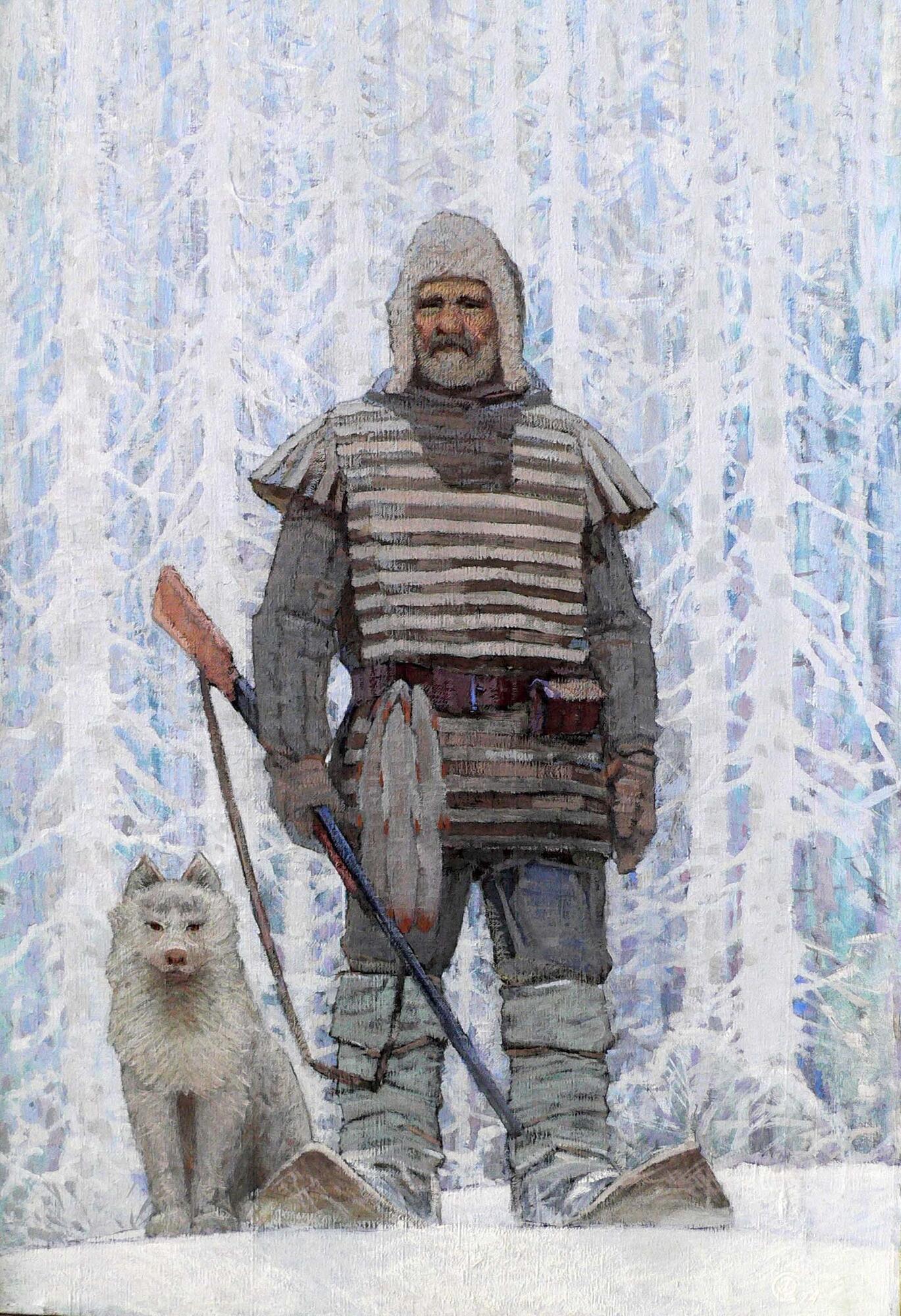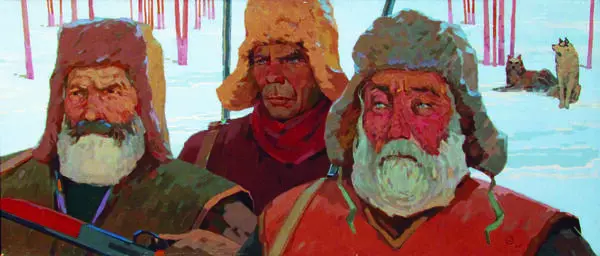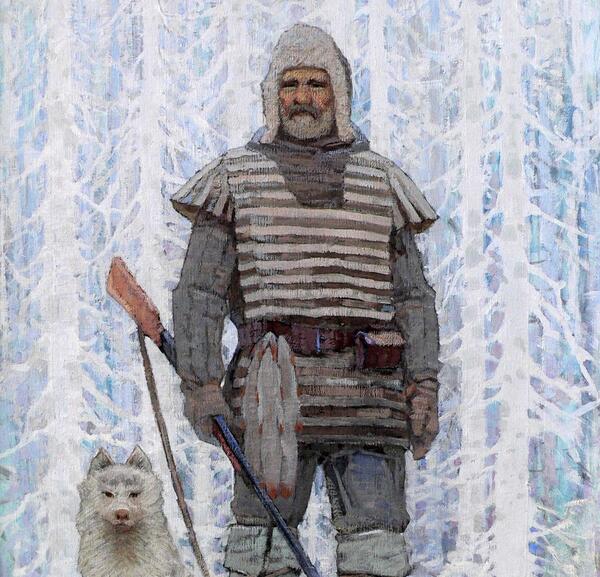The artist Sergey Dobryakov created a series of monumental works dedicated to the exploration of the Russian North and the unity of man and nature. His paintings are distinguished by their monumentality, large dimensions, and restrained color palette. Often, they lack the characteristics of genre painting and resemble decorative murals. The artist studied the ethnographic material of the Local Lore Museum extensively, making his works authentic and accurate.
Due to the popularity of heroic painting during the Khrushchev Thaw, many artists turned to the image of a hard-working hunter. Hunting and fishing have formed the basis of the Komi economy since time immemorial, and the experience accumulated by dozens of generations was just as relevant in the second half of the 20th century. In the mid-1960s, there were eight state-owned and two collective hunting reserves in the Komi ASSR.
In 1963, Sergey Dobryakov painted “Komi Hunters”, creating colorful and authentic images of hunters. Each character had a real-life prototype. The 1963 catalog lists their Komi nicknames as Yegor Ivan, Arkhip Ivan, and Maxim Andrey, where the first name was borrowed from the eldest member of the family, while the second name was the actual name of the person.
Instead of a particular person, the 1972 painting presents a collective image of a Komi hunter — a strong, agile, and sharp-sighted man, a master of the northern taiga. Like the majority of Dobryakov’s works of this period, this one is painted using dense layers of good-covering matte tempera, resembling a fresco. The fact that the viewer looks at the hunter from below adds a particular monumentality and significance to the image.
The hunter is depicted against a background of snow-covered taiga which resembles a frozen stage curtain of thick fir trees. This man is a squirrel hunter because their pelts can be seen hanging from his belt called tasma. Squirrels are one of the most hunted animals among Komi hunters. The hunting season occurs between January 25 and February 21. Sitting next to the hunter is his faithful companion and assistant — a Samoyed.
The man wears a striped laz or luzan — an essential element of a hunting outfit. This is a short cloak made of homespun cloth and worn on top of a shirt. Traditionally, such a cloak was sewn with stripes of light and dark material. The lining featured pockets for hunting gear, supplies, and trophies.
Each hunter had two pairs of skis — a lyz and a lyampa. The former was equipped with kamus — climbing skins made of deer leg skin, while the latter was made of spruce or pine. The wooden lyampa skis were used in wet weather and for fast walking. They had a length of up to two meters and were attached to the legs using special straps and laces.


